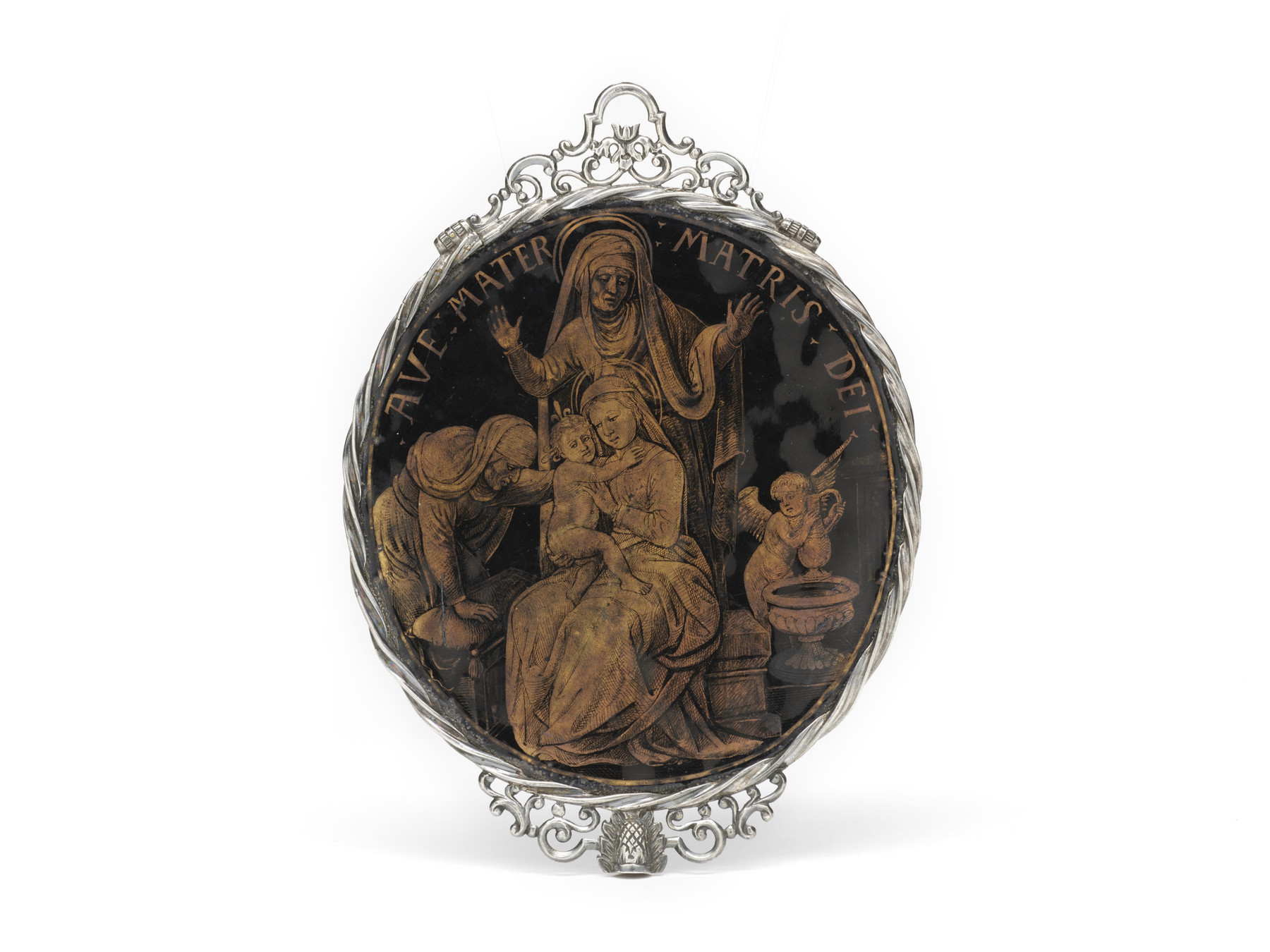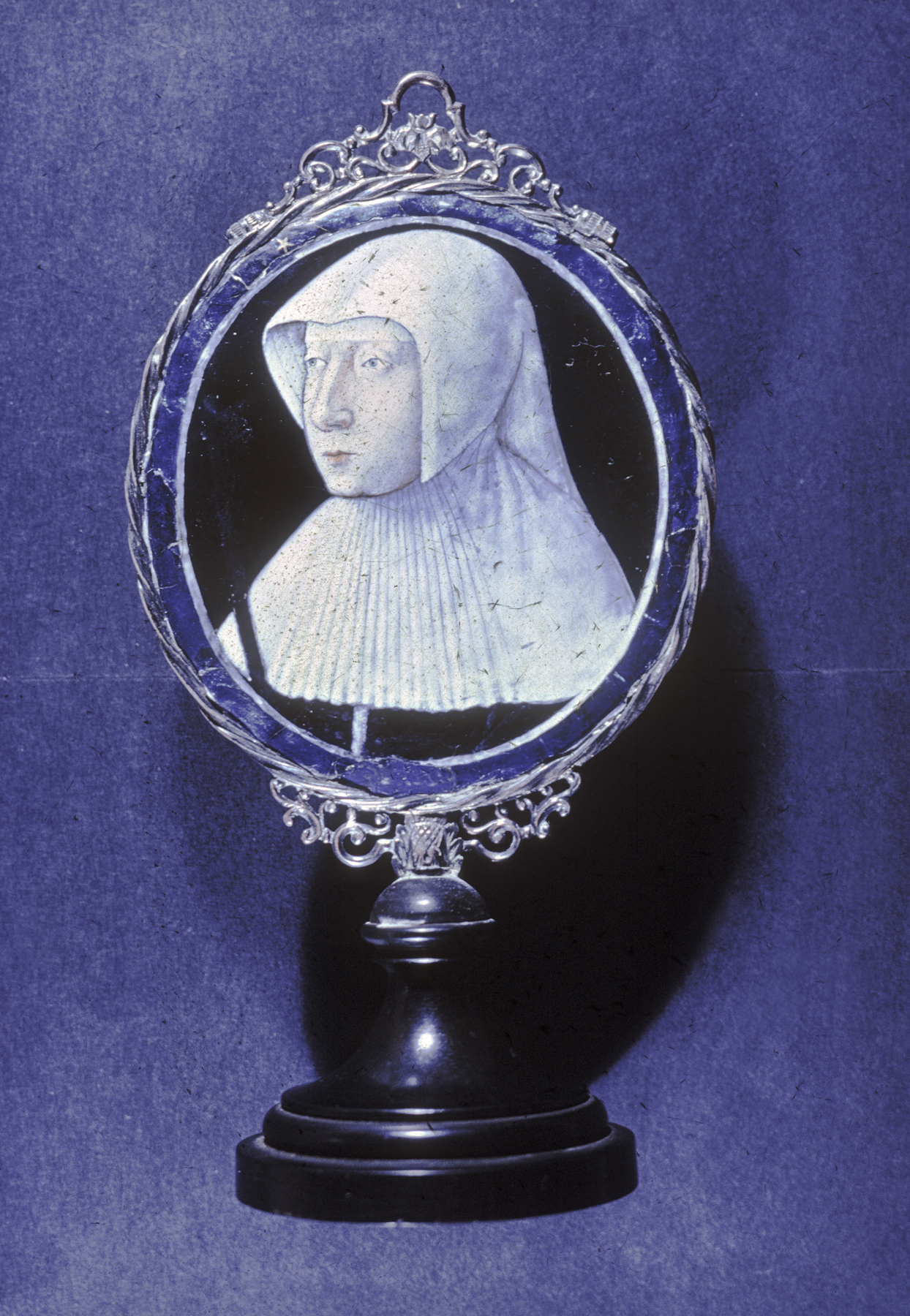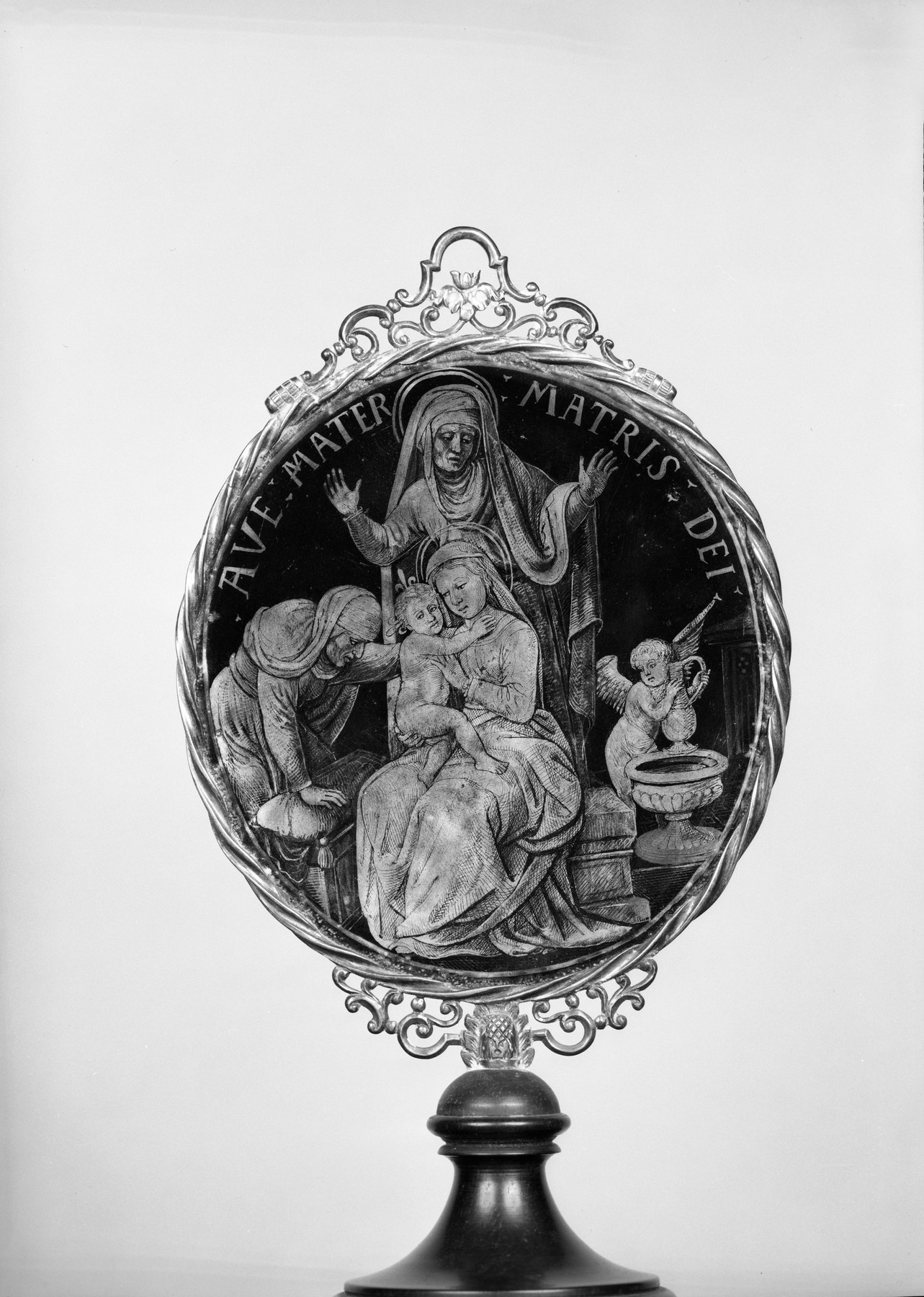Portrait of Marguerite of Navarre
(Renaissance Europe )
Marguerite of Angouleme (1492-1549) was the sister of King Francis I of France. Two years after her first husband's death in 1525, she married Henry of Navarre and became queen of the tiny kingdom of Navarre. She is portrayed here as a widow, contemplating a cross; on the reverse is an image of the Virgin with her mother and family known as the Holy Kinship, perhaps to honor the queen's own family. In the 1600s, she remained highly regarded for her writings, chiefly on the challenge of reconciling a worldly life with a Christian one.
The subtle execution would be remarkable for an enamel portrait of 1525-27, and is more consistent with later portraits by Leonard Limosin, who worked for Marguerite's husband Henry. The effect of the white bust against a dark oval background is like a Roman cameo. There are at least three versions of this fine portrait, probably made for relatives and admirers.
Provenance
Provenance (from the French provenir, 'to come from/forth') is the chronology of the ownership, custody, or location of a historical object. Learn more about provenance at the Walters.
Henry Walters, Baltimore, 1931 [mode of acquisition unknown]; Walters Art Museum, 1931, by bequest.
Geographies
France, Limoges (Place of Origin)
Measurements
4 1/4 x 3 1/8 in. (10.8 x 7.9 cm)
Credit Line
Acquired by Henry Walters, 1931
Location in Museum
Accession Number
In libraries, galleries, museums, and archives, an accession number is a unique identifier assigned to each object in the collection.
In libraries, galleries, museums, and archives, an accession number is a unique identifier assigned to each object in the collection.
44.504










